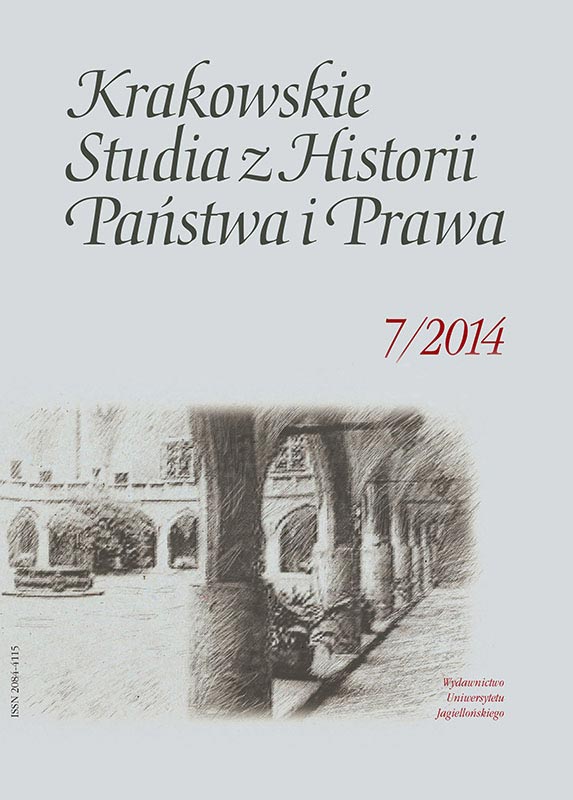Tortury a kara za nieposłuszeństwo w austriackich procedurach karnych epoki oświecenia
Torture and Punishment for Disobedience in the Austrian Penal Procedures during the Period of the Enlightenment
Author(s): Małgorzata MorasSubject(s): Law, Constitution, Jurisprudence, History of Law
Published by: Wydawnictwo Uniwersytetu Jagiellońskiego
Keywords: inquisition al trial; torture; punishment; Constitutio Criminalis Carolina; Constitutio Criminalis Theresiana; Criminal Proceedings Ordination; Franciscana; Penal Act of Western Galicia; Book of Laws
Summary/Abstract: In the introduction to the article, the origins of the inquisition al trial as well as the institution of torture were presented with special emphasis on the role of Pope Innocent III in formulating and systematizing the principles of inquisition al procedure in the canon law. The principles of this procedure were briefly outlined. The German-wide Constitutio Criminalis Carolina of 1532 was analyzed in respect of evidence proceedings and the institution of torture. Subsequently, the procedure associated with the use of torture as described in Constitutio Criminalis Theresiana of 1768, the last Austrian code of law permitting torture, was presented. The author also compared the resolutions relating to torture and contained in the above-mentioned codes of law. The negative and positive opinions of the representatives of the world of learning as well as men of law, concerning the institution of torture were subsequently presented. The subsequent section of the article deals with the institution of punishment for disobedience as found to the Austrian penal procedures from the years 1788–1803, and more precisely contained in the Criminal Proceedings Ordination of Joseph II of 1788, in the Penal Statue of Western Galicia of 1796 and in Franciscana of 1803, that is in the “Book of Laws relating to Criminal Offences and serious police crimes.” The evolution of the regulations concerning the institution of punishment for disobedience contained in the above-mentioned statutory laws was presented. The author also described the modification of the positive legal evidence theory in the direction of a negative legal evidence theory, introduced within the Criminal Proceedings Ordination of Joseph II. The opinions of lawyers with regard to punishment for disobedience were also discussed. In the final part of the article, the author compares the institution of torture and punishment for disobedience and emphasizes that punishment for disobedience was perceived as a measure serving to maintain proper order in the course of the proceedings, that is, the so called Ordnungsmittel. Torture, on the other hand, was defined as Zwangsmittel. It was emphasized that torture was an inseparable element of an inquisition al trial and was associated with the legal evidence theory which was mandatory during such trials. Finally, it was pointed out that the vacuum after torture was filled by two measures, namely: punishment for suspicion (Verdachstrafe) and punishment for disobedience (Ungehorsamstrafe)
Journal: Krakowskie Studia z Historii Państwa i Prawa
- Issue Year: 7/2014
- Issue No: 2
- Page Range: 217-235
- Page Count: 19
- Language: Polish

